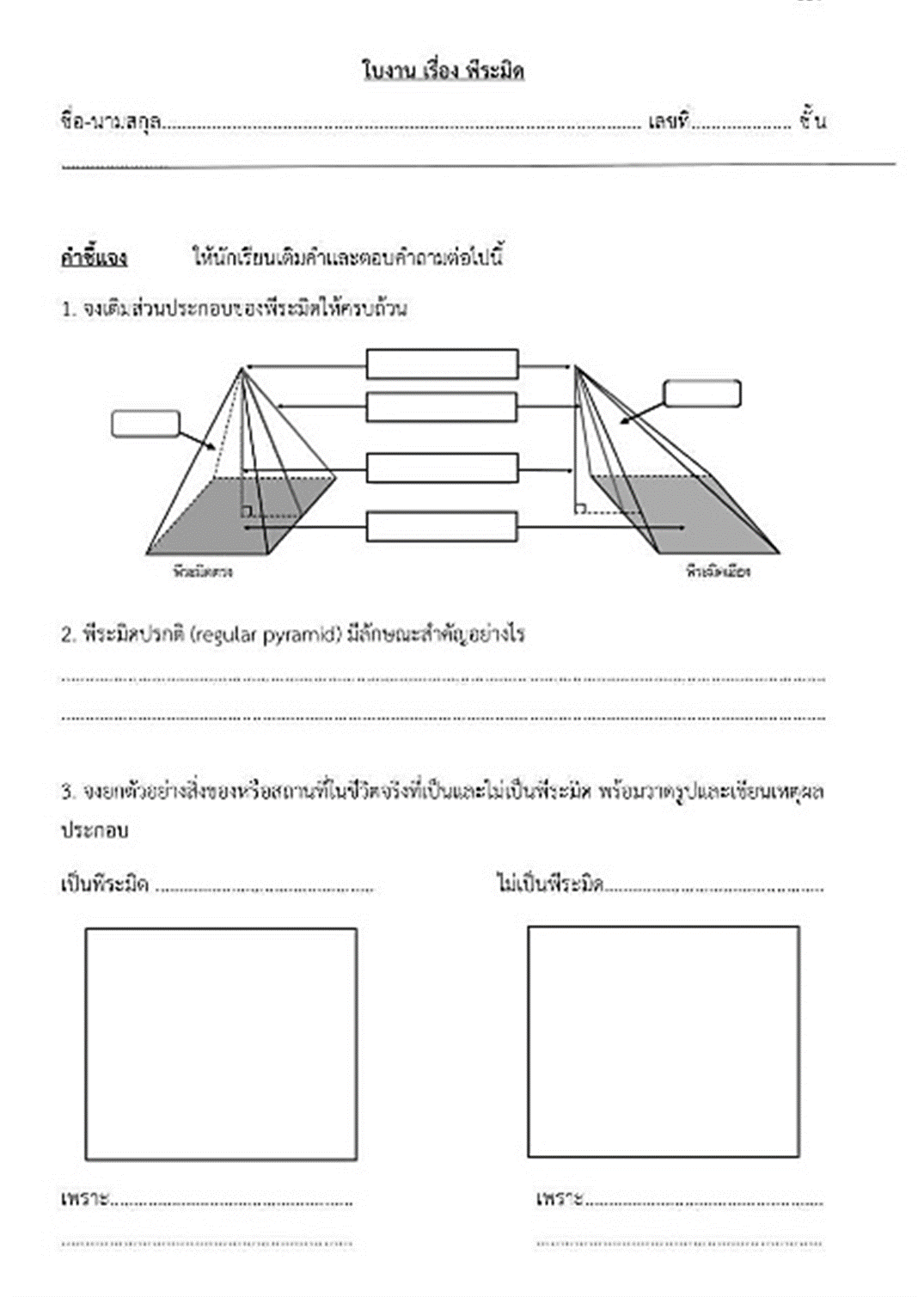Effects of Organizing Mathematics Learning Activities Using Lesh’s Translation Model and Contextual Teaching and Learning on Mathematical Concept of Lower Secondary Students
Keywords:
Lesh’s translation model, contextual teaching and learning, mathematical concept, mathematical representations, REACT strategiesAbstract
The purposes of this research were: 1) to compare the mathematical concept of lower secondary school students after learning using Lesh’s translation model and contextual teaching and learning to the 60 percent criteria, and 2) to study the development of the mathematical concept of students through learning using Lesh’s translation model and contextual teaching and learning. The sample for this study consisted of 44 ninth-grade students under the Samut Sakhon Samut Songkhram Secondary Educational Service Area Office. The research instruments consisted of lesson plans, a mathematical concept test, and mathematical concept worksheets. The data were analyzed using arithmetic mean, standard deviation, percentage, t-test, and content analysis. The results of the research revealed that: 1) the students’ mathematical concepts after learning using Lesh’s translation model and contextual teaching and learning had a score of 53.27 percent, which was not higher than the 60 percent criteria, and 2) students’ mathematical concepts after learning using Lesh’s translation model and contextual teaching and learning improved, specifically in terms of explaining characteristics, understanding meaning, and relating mathematical representations of mathematical concepts, and explaining and using formulas, rules, and mathematical procedures.
References
ภาษาไทย
กระทรวงศึกษาธิการ. (2551). ตัวชี้วัดและสาระการเรียนรู้แกนกลาง กลุ่มสาระการเรียนรู้คณิตศาสตร์ตามหลักสูตรแกนกลางการศึกษาขั้นพื้นฐาน พุทธศักราช 2551. กรุงเทพฯ: โรงพิมพ์ชุมนุมสหกรณ์การเกษตรแห่งประเทศไทย
ชยานันต์ จิรสินกุลโรจน์. (2559). การพัฒนากิจกรรมการเรียนรู้คณิตศาสตร์โดยใช้โมเดลการแปลงของเลชด้วยตัวต่อเลโก้ (LEGO®) เพื่อเสริมสร้างมโนทัศน์และความคงทุนในการเรียนรู้ เรื่อง เศษส่วน ชั้นประถมศึกษาปีที่ 4 [วิทยานิพนธ์การศึกษามหาบัณฑิต, มหาวิทยาลัยนเรศวร].
ธีรนาถ ธงงาม. (2548). ผลของการจัดกิจกรรมการเรียนรู้คณิตศาสตร์โดยใช้โมเดลการแปลงของเลชที่มีต่อมโนทัศน์และความคิดสร้างสรรค์ทางคณิตศาสตร์ของนักเรียนชั้นมัธยมศึกษาปีที่ 2 จังหวัดร้อยเอ็ด [วิทยานิพนธ์ปริญญามหาบัณฑิต, จุฬาลงกรณ์มหาวิทยาลัย].
สถาบันทดสอบทางการศึกษาแห่งชาติ. (2565). รายงานผลการทดสอบทางการศึกษาระดับชาติขั้นพื้นฐาน (O-NET) ม.3 ปีการศึกษา 2565. https://www.niets.or.th/
สถาบันส่งเสริมการสอนวิทยาศาสตร์และเทคโนโลยี. (2555). คู่มือวัดผลประเมินผลคณิตศาสตร์. กรุงเทพฯ: ศรีเมืองการพิมพ์
สถาบันส่งเสริมการสอนวิทยาศาสตร์และเทคโนโลยี. (2561). รายงานประจำปี 2560 สถาบันส่งเสริมการสอนวิทยาศาสตร์และเทคโนโลยี. บริษัท มายด์ มีเดีย เซ็นเตอร์ จำกัด.
สถาบันส่งเสริมการสอนวิทยาศาสตร์และเทคโนโลยี. (2564). ผลการประเมิน PISA 2018 การอ่านคณิตศาสตร์และวิทยาศาสตร์. สถานบันส่งเสริมการสอนวิทยาศาสตร์และเทคโนโลยี (สสวท.). https://pisathailand.ipst.ac.th/pisa2018-fullreport/
อัมพร ม้าคนอง. (2558). คณิตศาสตร์สำหรับครูมัธยม. กรุงเทพฯ: โรงพิมพ์แห่งจุฬาลงกรณ์มหาวิทยาลัย.
ภาษาอังกฤษ
Charlesworth, R. (2005). Experiences in Math for Young Children (5th ed.). United States: Thomson Delmar Learning.
Cramer, K., & Karnowski, L. (1995). The importance of informal language in representing mathematical ideas. Teaching children mathematics, 1(6), 332-335.
Crawford, M. L. (2001). Teaching contextually: Research, rationale, and techniques for improving student motivation and achievement in mathematics and science. Waco, Texas: CCI Publishing, Inc.
De Cecco, J. P. (1968). The psychology of learning and instruction. New York: Prentice Hall.
Hull, D. (1999). Teaching science contextually: The cornerstone of Tech Prep. USA: Cord Communication, Inc.
Johnson, E. L. (2018). A New Look at the Representations for Mathematical Concepts: Expanding on Lesh's Model of Representations of Mathematical Concepts. Forum on Public Policy Online, 2018(1). Oxford Round Table, 406 West Florida Avenue, Urbana, IL 61801.
Lestari, L., & Surya, E. (2017). The effectiveness of realistic mathematics education approach on ability of students’ mathematical concept understanding. International Journal of Sciences: Basic and Applied Research (IJSBAR), 34(1), 91-100.
Piaget, J. (1970). Piaget’s Theory (G. Gellerier & J. Langer, Trans.). In: P.H. Mussen (Ed.), Carmichael’s Manual of Child Psychology (3rd Edition., Vol. 1). New York: Wiley.
Texas Collaborative for Teaching Excellence. (2007). What is contextual teaching and learning? Retrieved from https://www.texascollaborative.org/WhatIsCTL.html

Downloads
Published
How to Cite
Issue
Section
License
Copyright (c) 2024 An Online Journal of Education

This work is licensed under a Creative Commons Attribution-NonCommercial-NoDerivatives 4.0 International License.


